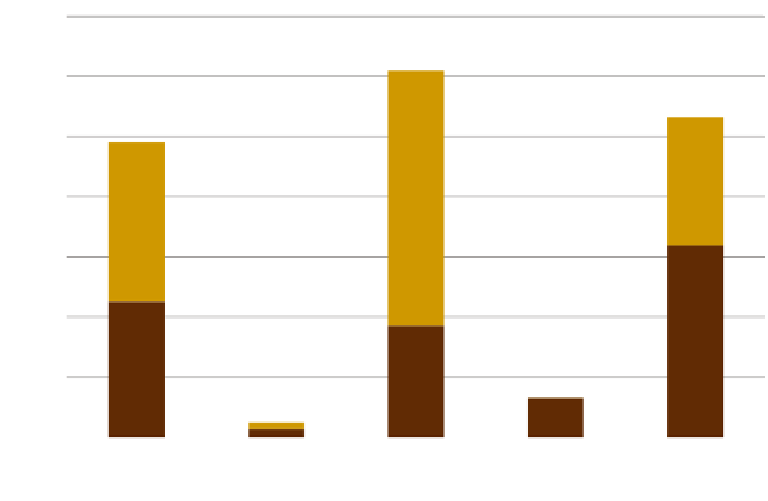Geology Reference
In-Depth Information
350000
Distribution of coal proved reserves in the world
Mt
300000
250000
106,517
200000
211,614
132,253
150000
100000
159,326
112,835
50000
92,990
174
5,618
32,721
6,890
0
North America
S. & Cent. America
Europe & Eurasia
Middle East & Africa
Asia Pacific
Anthracite and bituminus
Sub-bituminous and lignite
Fig. 6.5 Coal proved reserves at the end of 2010. Values in million tonnes. Elaborated from data
included in WEC (2010)
processes begin to break down the organic matter into what is called kerogen, a
precursor of oil and gas. The second stage is marked by the thermal alteration
of kerogen to hydrocarbons as the deposit is buried deeper by younger, overlying
sediments. The production of hydrocarbons begins at a temperature of around 50
to 60
o
C and at a depth of 2 to 2.5 km. Hydrocarbon formation continues to depths
of 6 to 7 km and temperatures of 200 to 250
o
C. Formation of oil dominates in the
lower temperature ranges and gas in the higher.
The British standard BS2869:1998 classifies fuel oil into six classes according to
its boiling temperature, composition and purpose. No. 1 and No. 2 are referred to
as distillate fuel oils, while No. 4, No. 5 and No. 6 are labelled residual fuel oils. In a
more commercial sense: No. 1 fuel oil is kerosene; No. 2 is diesel oil and No. 4, 5 and
6 are heavy fuel oils. Table 6.5 shows the chemical composition, density and HHV
of classes 1, 2, 4, 5 and 6. Low molecular weight petroleum has an exergy content
between 40 to 46 MJ/kg. Higher molecular weight petroleum and the hydrocarbon
portion of inorganic mixtures have a chemical exergy close to 40 MJ/kg (Hermann,
2006).
Natural gas consists primarily of methane but includes significant quantities of
ethane, butane, propane, carbon dioxide, nitrogen, helium and hydrogen sulphide.
The main properties of natural gas are listed in Table 6.6. The specific exergy of
natural gas is around 50 MJ/kg (Hermann, 2006).













Search WWH ::

Custom Search